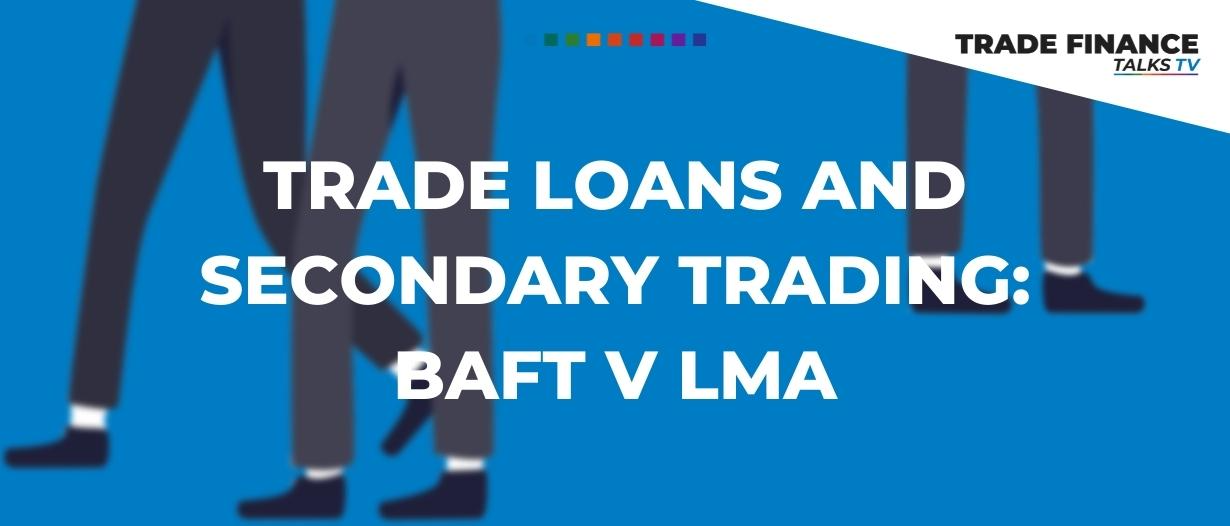This article is co-authored by Ian Clements, Alexander Hewitt, and Evdokia Maslennikova of Dentons
Trade loans are used to finance transactions involving import or export trading and reflecting different stages in the commodity trade cycle, from pre-export financing to borrowing base facilities.
All trade loans, however, are used to finance imports, exports, or other trading transactions.
Trade loans vary from uncommitted, unsecured bilateral financings, to complex secured, syndicated financings (almost inevitably made under Loan Market Association (LMA) style documents).
In addition to ‘traditional’ loans to corporates, trade loans are also made inter-bank, enabling borrowing financial institutions to on-lend to corporates.
As in many banking sectors, market participants are often keen to achieve two things:
- Standardised documentation; and
- Better secondary markets distribution (e.g., to de-risk or improve liquidity).
Achieving the first tends to promote the second, which makes the standard forms published by the Bankers Association for Finance and Trade (BAFT) and the LMA so useful.
The BAFT master trade loan agreement (MTLA) creates framework terms for unsecured, uncommitted, bilateral trade loans with a single bullet repayment to corporate or financial institutional borrowers.
Variations to the standard MTLA terms can be made in “Trade Loan Requests”, which document specific advances.
There are two ways that a lender can assign or transfer interests on a loan so that it is no longer the lender of record:
- An assignment of rights, or
- A novation of rights and obligations.
To use these options, either the underlying transaction must not prohibit assignment or transfer, or relevant counterparties must consent (including to disclosure of confidential information).
While there are no market standard procedures for assignment or novation agreements used in connection with the BAFT MTLA, the LMA documents contain standardised mechanisms and agreements for these processes.
Although the initials ‘LMA’ are synonymous with ‘market’ in many areas of the loan market, parties sometimes prefer to use shorter or bespoke documents.
With secondary trading via transfer certificate or assignment in mind, such parties may want to pick the key features of the LMA’s primary documents summarised below.

Aspects of the LMA
In LMA-based facility documents, a security agent holds any security on trust for finance parties, preventing the security documents from being discharged via novation.
Each lender has a qualified right to independently sue for recovery of its own debt claims.
This even includes lenders who entered the transaction through a transfer certificate or assignment agreement.
Payments between all parties are usually to be made available to the facility agent–and any guarantee is given to each finance party severally and directly.
Using a quirk of English contract law (based on Carlill v. Carbolic Smoke Ball Company), the LMA form of transfer certificate novates a lender’s participation, binding all parties to the facility agreement even though only the facility agent, existing lender, and new lender sign the transfer certificate.
The LMA assignment agreement (in effect, an assignment, assumption and release agreement) produces a similar economic result–again with only the facility agent, existing lender and new lender signing.
The impact of novation on LMA loans
Transfer certificates are used where lenders have rights and obligations to novate (e.g., under undrawn commitments) unless the facility is in default (as there is a risk that novation can waive a default).
Each novation terminates the loan contract between the existing lender, the borrower, and all other parties with respect to the transferred participation (but not in relation to any retained participation or any transaction security).
This means that the new lender’s rights under the security trust replace those of the existing lender.
Bilateral lenders holding security for their own advances can avoid novation discharging their security by holding it under a security trust.
This can be done when the bilateral loan is documented as a syndicated loan that employs the key LMA features mentioned above.
Novation and assignment agreements
The LMA assignment agreement is mainly used if a borrower is in a civil law country that has issues with transfer certificates.
Legal advice should be taken on the effect of the assignment agreement in any given jurisdiction–including any security issues.
While economically very similar to a novation, the assignment agreement (unsurprisingly) contains an assignment of rights.
Where participation is assigned, English law can make it impossible for an assignee to sue under its assigned rights without bringing its assignor into the proceedings.
However, one effect of the key features of the LMA forms summarised above is an English court is likely to treat an LMA assignment agreement as entitling the new lender to sue for recovery of the assigned participation without any assignor involvement.

BAFT’s master participation agreement
Secondary trading in loans includes the use of sub-participations–something that is very common for trade loans using BAFT’s form of master participation agreement (MPA).
BAFT’s 2018 English law MPA can create funded or unfunded risk participation in trade assets.
Unlike the (still used) 2008 MPA, the 2018 MPA gives the buyer an equitable assignment in a participated asset.
Again, in contrast to a 2008 (debtor/creditor) participation, the 2018 assignment model is capable of taking the asset off the seller’s balance sheet and outside its insolvency estate.
In addition, the equitable assignment can sometimes be ‘elevated’ to a full legal assignment.
This depends, however, on the terms of the participation and applicable laws, such as the governing law of the asset, which usually gives the buyer simpler enforcement rights against the debtor under the purchased asset.
BAFT MPA vs LMA
In contrast to the 2018 BAFT MPA, LMA funded and risk participation in trade loans are debtor/creditor arrangements.
Pending any elevation, there is only an economic transfer of the lender’s risk in the underlying transaction, with none of the lender’s rights against an obligor being transferred and the seller remaining the lender of record.
Advantages and disadvantages of the LMA
An advantage to the LMA model is it can be used where there are prohibitions on assignment or transfer in the trade loan, or when a loan is in default–and it helps prevent the sub-participation being re-characterised as an assignment.
A disadvantage to the buyer is that it has no rights under the trade loan documents (including any security or guarantees), and no right to exercise rights or discretions under any of these documents.
A participant’s consent to any such actions is only required under LMA participations of a seller’s entire interest under the participated loan.
A related point is that the indemnities in the trade loan are usually only triggered by circumstances happening in relation to the seller, not the buyer.
Elevation
A key difference between the LMA and BAFT participation documents is that under the LMA, elevation wording is included only in the funded version of the LMA master participation agreement.
Even here, the language is loose and heavily qualified–with the operative provisions for the transfer or assignment being left for buyer and seller to agree outside the participation agreement.
Ian Clements, Alexander Hewitt, and Evdokia Maslennikova recently presented the topic of trade loans at an ITFA North European Regional Committee seminar.

About the authors

Ian is a Partner in Dentons’ London office. He focuses on international commodity, structured trade, receivables and export finance transactions. Ian’s work includes advising on various financing structures and commodity types, including borrowing base, pre-export and structured prepayment financings as well as bilateral trade finance facilities. Ian also has expertise in export credit financings, receivables financing transactions, and trade finance distributions. Ian acts for financial institutions, alternative finance providers, borrowers, trading houses and export credit agencies.

Alexander has over 25 years of experience as a banking lawyer. He specialises (among other things) in trade, commodity and receivables finance. He regularly speaks on these topics – and on the technical side of assignments and novations.

Evdokia (Dunya) joined Dentons in 2011 and qualified into the Trade and Commodity Finance team in London in 2013. Dunya acts for banks, borrowers and commodities trading houses. Her experience includes oil and gas, metals, soft commodities, supply chain finance and receivables finance transactions.
Read the latest issue of Trade Finance Talks, July 2022






















